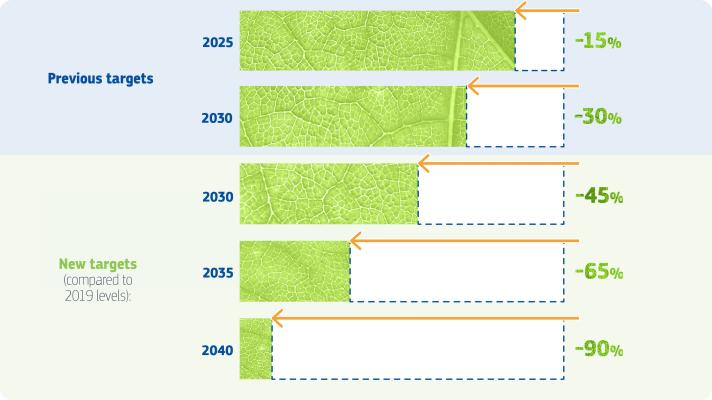The European Commission has established a goal of reducing carbon emissions by 90% for new heavy-duty vehicles by 2040, allowing for the potential continued sale of certain combustion engine buses and trucks beyond the specified timeframe. The intensity of the CO2 reduction targets will progressively escalate every five years, commencing with a 45% reduction compared to 2019 levels by 2030, increasing to 65% by 2035 and reaching 90% by 2040.
 Source: European Commission
Source: European Commission
These targets will apply to the fleet as a whole, necessitating manufacturers to meet them as an average. Consequently, although the majority of vehicles will need to be powered by electricity or hydrogen in 2040, a few may still use combustion engines.
The European Commission’s climate chief, Frans Timmermans, has introduced a highly-anticipated regulatory proposal in Strasbourg last month. This proposal includes more stringent standards for city buses, which will require the adoption of zero-emission technology by the year 2030. Timmermans emphasized that this measure will not only decrease the demand for imported fossil fuels but also augment energy savings in the transportation sector.
This move is a crucial step towards achieving the EU’s goal of net-zero emissions by 2050 and underscores the EU’s commitment to sustainability and reducing its environmental impact.
Furthermore, Frans Timmermans has emphasized that ensuring a transition to cleaner vehicles is vital in protecting Europe’s manufacturing dominance. He is of the opinion that the EU’s current status as a market leader in the production of trucks and buses can be maintained by enacting a regulatory framework that incentivizes the adoption of eco-friendly transportation technologies.

Heavy-duty vehicles account for roughly 2% of traffic on European roads but are responsible for a significant 28% of road transport emissions. Therefore, it is essential to take action to reduce the environmental impact of these vehicles and promote sustainable transportation practices. By doing so, the EU can not only maintain its manufacturing leadership but also help mitigate the effects of climate change.